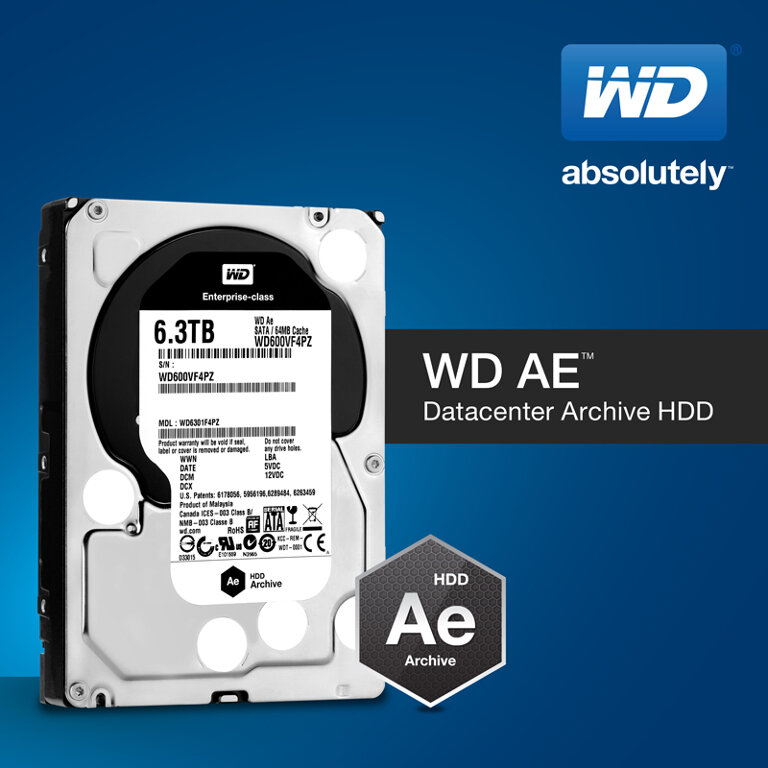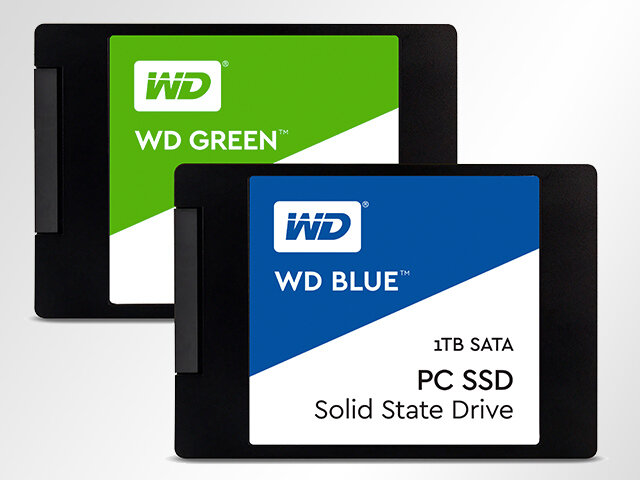Manila, Philippines – September 2014 – WD, a Western Digital (NASDAQ: WDC) company and world leader in storage deployed for modern datacenters, today announced its innovative WD Ae line of hard drives designed for the unique operating characteristics of the emerging archivetier within web-scale data centers. Built on a platform to achieve optimal total cost of ownership (TCO), WD Ae hard drives utilize the lowest possible power consumption and a Progressive Capacity model to enablea new tier of storage for large-scale cloud infrastructures.
The expanding scale of data creation and the corresponding need to retain, preserve and extract value from that data creates a new and unique challenge for large-scale data center entities. Reliable, long-term data management for massive-scale data storage is becoming ever more critical. The conventional tools and technologies for cost-effective storage are not effective in massive-scale datacenters, so entirely new approaches to storage architectures and associated component technology are emerging.
Focusing on the unique attributes of cold data, WD has led the cold/archive market with multiple generations of archive storage, actively evolving a product formula to deliver the optimal combination of cost-effectiveness, power efficiency,storage density and application intensity. WD Ae drives are purpose-built archive HDDs with extreme areal density on a high volume mechanical platform that offersincreased power efficiency and a Progressive Capacity model.
Part of the unique attributes of the WD Ae hard drive family includes: a dense five-platter platform, which renders an optimal mix of power, performance, capacity and cost;capacities greater than 6 TB; SATA 6 Gb/s interface; and a workload and reliability rating of 60 TB/yr workload and 500 Khrs Mean Time Before Failure (MTBF).
WD Ae Progressive Capacity
As technology and manufacturing processes mature over time, incremental capacity increases are realized. WD’s innovative Progressive Capacity model allows distribution of these incrementally higher capacity models to take advantage of their fullestavailable capacity: 6.1TB, 6.2TB, or 6.3TB, for instance.
These more granular capacity increments result in far greater capacity attainment through the life of a product platform. At the massive scale of modern applications, the availability of incremental capacity each quarter renders exceptional value to datacenters who can realize improvements in capacity-per-drive, capacity-per-volumetric space and reduced infrastructure overhead.
Hot vs. Cold Data Storage – the Data Storage Temperature Continuum
While approximately 20-30 percent of data on most networks is active,commonly referred to as “hot,” the majority of data, 70-80 percent is inactive or “cold,” meaning it is unchanging and infrequently accessed. Given the challenges of storing petabyte- orexabyte-scale data, public cloudand private cloud ecosystemsare focused on creating entirely new tiers of storage to deal with the varying degrees of “data temperature.” The cold data tier is emerging in a manner very similar to the way the “Tier 0” emerged over the past decade to deal with critical performance requirements. Now the industry is adding a new tieron the opposite end of the data temperature spectrum, often referred to as “Tier 3” storage.
Cold storage is the practice of creating a new tier of important information not frequently accessed for long periods of time, and can includestructured, unstructured, or semi-structured data that has timeless value, and of whichthe exact schedule of retrieval is uncertain. As a result, data retrieval times can be relaxed, compared to the speed at which hot data needs be retrieved.
Ultimately, with purpose-built and cost-optimized cold data storage infrastructure and devices, IT departments can deliver vastly improved time-to-archive and time-to-retrieve cold/archive data that outstrips capabilities of monolithic tape libraries, while utilizing standard hard-drive based storage solutions that are abundantly used and understood to realize optimal application value and significant storage cost savings.
Availability
WD Ae hard drives will be sold in box quantities of 20 and available to select distributors, integrators and distributed by Ubertech Technologies Inc and Iontech Techologies Inc. in the Philippines starting late 2014. WD Ae drives are covered by a three-year limited warranty. More information about WD’s Ae data center hard drives can be found on the company website at http://www.wdc.com/en/products/products.aspx?id=1340.






